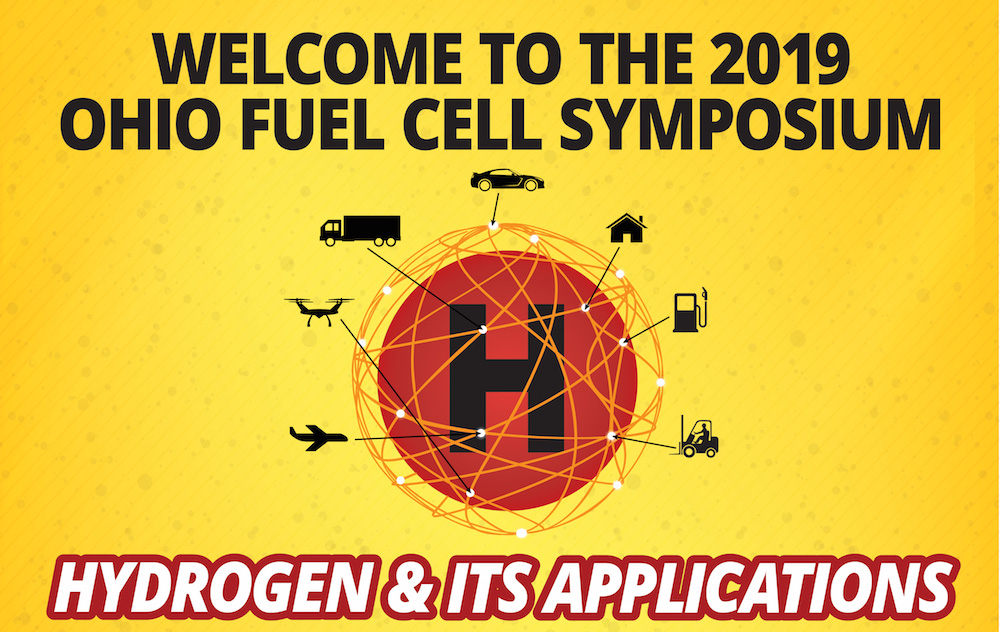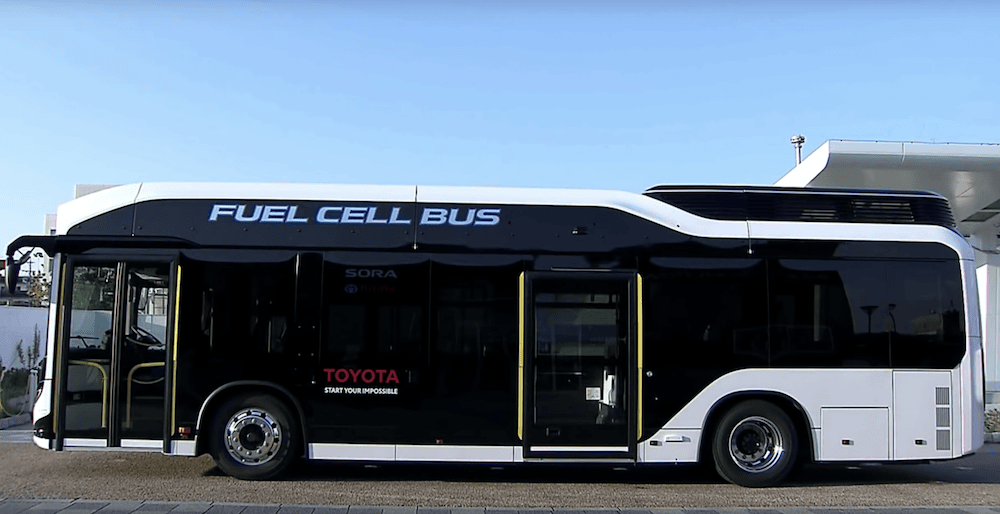
[Image above] Hydrogen has a lot to offer to energy storage and power generation systems, if we can overcome current challenges. Credit: Pat Valente, OFCC
Thanks to research leadership in Ohio’s many universities, national labs, private research organizations, and industries, the state has for years been on the leading edge of technological development across many fields.
In the late 1990s, the organizations working with fuel cells banded together with the state government to form the Ohio Fuel Cell Coalition (OFCC) to promote research, development, manufacturing, and deployment of cleaner alternative energy generation systems. The Ohio Fuel Cell Symposium is the annual meeting of OFCC to share the state of the industry.
In a former position, I attended the Ohio Fuel Cell Symposium yearly. However, I have been out of that position for many years, and so I was excited when I had the opportunity to attend the Symposium again this year. I was interested to see the progress made during my time away. In many ways, the Symposium did not disappoint.

Credit: Pat Valente, OFCC
This year’s program focused on hydrogen and its applications, for good reason. The global adaptation of solar and wind power generation has created a significant need for energy storage to ensure availability when the sun does not shine and the winds do not blow. Batteries and pumped storage systems are often used for this application. However, in recent years, the use of hydrogen for energy storage and power generation has been moving forward from technology development to having real-world, business-use value.
Hydrogen advantages
Hydrogen for storage and power generation is not new. Niche applications in communications and warehouse lift trucks have been around for over 10 years. The key for these applications is the cost of capacity to meet specific up-time needs.
For lift trucks, hydrogen tanks can be changed in minutes while recharging batteries takes hours. For communications, the cost of installing and operating batteries that store enough energy to power a cell phone tower for 48 or 72 hours (e.g., during a hurricane or blackout) is much higher than for hydrogen storage systems. Plug Power, a leader in these applications of hydrogen power, spoke about how hydrogen and fuel cell production and reliability have been growing steadily through vertical integration.
Another key to hydrogen is long-term storage. Batteries suffer from self-discharge, meaning that while batteries are effective for short-term storage needs (minutes or hours), the internal loss of energy provides challenges for longer term uses. The Symposium speakers presented various scenarios for long-term storage, including co-locating hydrogen within the nation’s compressed natural gas pipeline system.
Hydrogen challenges
A significant stumbling block to using hydrogen for utility scale energy storage has been the environmental and economic costs of production. Currently the leading method for producing hydrogen is steam methane reforming, which is no cleaner than burning natural gas. Nel Hydrogen, a producer of hydrogen by large-scale electrolysis using grid electricity, made the business case that hydrogen produced with low-cost electricity (i.e., when solar and wind are over-producing) can be used to generate high-cost electricity. The economics support this scenario even when considering efficiencies that are lower than current battery technology.
Raw materials are a challenge for both batteries and hydrogen electrolysis. Using batteries to solve the global electric energy storage needs would require thousands of metric tons of lithium and cobalt. Global reserves of these materials are estimated to be in the hundreds of metric tons. Hydrogen and hydrogen fuel cells use platinum as electrode catalysts. While platinum reclamation is part of the fuel cell and electrolysis companies’ business plans, finding a replacement catalyst is an ongoing opportunity for ceramists and other materials scientists.
Hydrogen markets and opportunities
A huge opportunity for hydrogen and fuel cells is transportation. Driven mainly by environmental concerns, many of the major manufacturers of automobiles and buses have produced fuel cell vehicles. Due to limited availability of hydrogen fueling stations, the early adopters of these vehicles are limited to certain regions of the world such as California, Europe, and cities in China. Many of these vehicles have exceeded performance and longevity goals.

Late last year, Toyota Motor Corporation announced the launch of the “Sora1,” a Toyota fuel cell bus concept. The company expects to introduce over 100 Sora, mainly within the Tokyo metropolitan area, ahead of the Tokyo 2020 Olympic and Paralympic Games. Credit: Alpha SQUAD official, YouTube
The outlook for solid oxide fuel cells (SOFCs), particularly in Ohio, is not nearly as positive. Dominating the Symposium was talk of LG Fuel Cell Systems. They had a 200-kW solid oxide fuel cell system operating with high efficiency. Unfortunately, LG shut the program down late last year in a reorganization.
Other speakers discussed markets for SOFCs. For example, small-scale SOFCs (2–10 kW) have better prospects in Europe and Japan where electricity is relatively expensive and houses are heated with hot-water boilers (which takes advantage of the thermal energy given off by SOFCs).
Building-sized combined heat and power units are being tested in the United States, though representatives of the most active companies in this space did not attend the Symposium. Presenters did suggest that appliance-sized SOFC and solid oxide electrolysis units have benefits over turbine technology in grid balancing and off-grid applications.
In conclusion, much progress is being made in the production, storage, and use of hydrogen gas, with solid business cases for niche applications and positive economic models for storing and balancing renewable electricity. SOFCs have seen some setbacks in the U.S., but researchers continue to seek solutions to overcome cost and technology barriers to adoption.
Author
Jonathon Foreman
CTT Categories
- Energy
- Transportation


